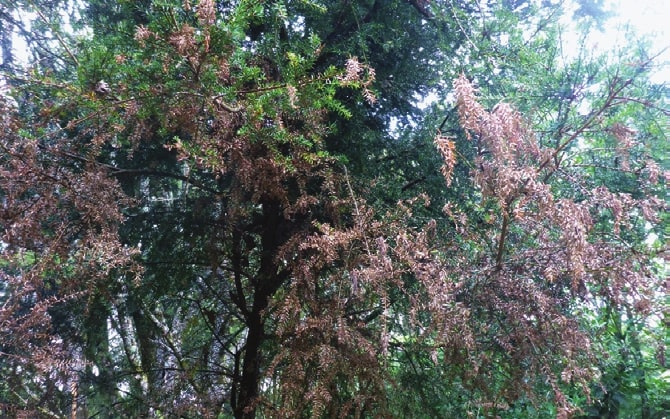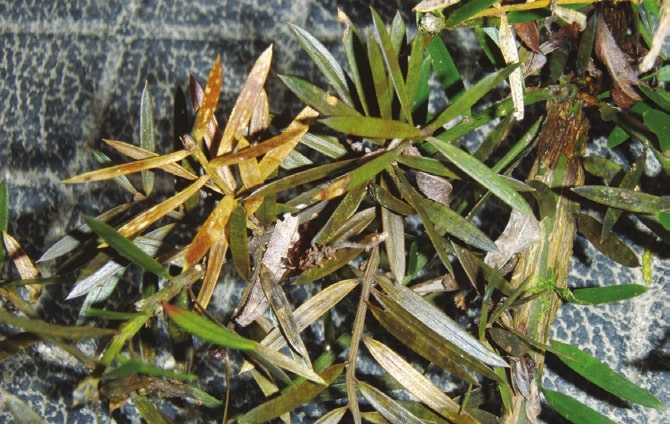Tell us if you have seen totara blight
Kiryn Dobbie, New Zealand Tree Grower November 2020.
Do you have totara growing at your place? Have you noticed the needles changing colour then falling off? If so, Scion would like to hear from you.
Now is a good time to spot totara blight. Its symptoms are most obvious in winter and spring, starting with needles turning a khaki colour, often becoming black and then falling off. Shoot tips may also die but retain dead, browned needles, giving the tree a fire-scorched appearance. Larger twigs and branches over 10 mm diameter can remain healthy and trees eventually recover.
Totara blight has been reported from Northland to the Wairarapa over the last 10 years or so, but no-one knows how common or widespread it is. Forest protection scientists at Scion would like your help to find out more about this disorder.
Needle browning and needle cast on Podocarpus totara was first investigated by Scion in 2011. Forest pathologists found an unknown or undescribed, slow-growing fungus-like organism which they currently call Phytophthora taxon totara. A formal species description is currently underway. Hall’s totara Podocarpus laetus is also a host.
Reporting totara blight
If you think you have trees with totara blight you can report it using either an app or simply emailing us. The Find-A-Pest app allows you to report diseases, pests and weeds quickly with a smartphone. It can be downloaded free from the Apple or Android app stores.
Open the app, join the forestry sector from the settings menu and choose forestry on the front page of the app. You can then take a photograph to report any suspected sightings. These reports automatically alert Scion plant pathologists. You do not have to be connected at the time, the report will be sent when your phone joins a network again. You can find out more at www.findapest.nz.
The simple alternative is an email and photograph to fhdiagnostics@scionresearch.com.



 Farm Forestry New Zealand
Farm Forestry New Zealand